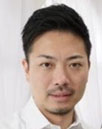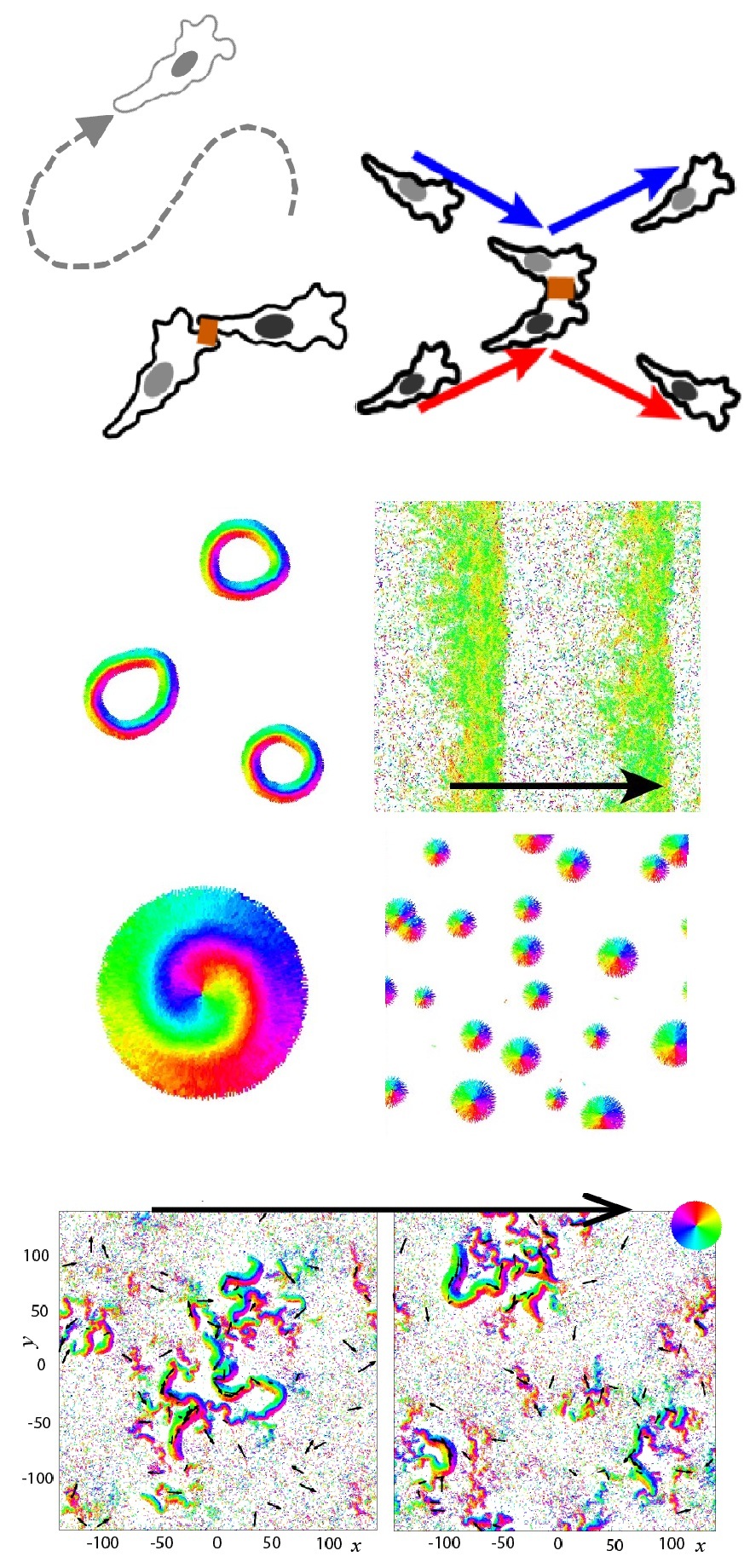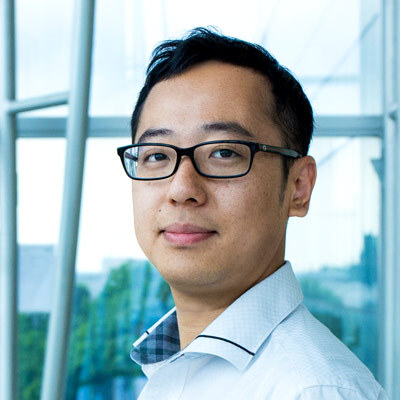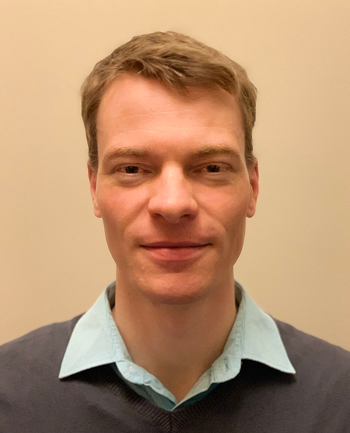Seminars
第3回アクティブマターセミナー(第5回札幌発動分子科学セミナー)

10:00-12:00, Dec. 6 (2022).
Online (Zoom)
Presentation
化学ロボットの創成
MEMS技術によってデバイスの超集積化を実現され,高機能な機械システムが実現されている.産業分野では,ハードウェアとソフトウェアが高度に連携した機械やデバイスが多くのサービスが創出している.最近では有機材料を使った半導体による回路が研究されており、フレキシブルなデバイスも登場しユニークなインターフェースが登場している.このような技術の進歩に伴って,機械やデバイスの設計の複雑さが進行している.我々は,このような複雑さの壁を乗り越えるため,化学反応によって駆動する新奇なソフトマシンやソフトロボットを提案している.このようなsoft machinesやsoft robotsは複雑な配線・プログラミングを必要せず,自律的に駆動することができる.本講演では具体的には振動化学反応と刺激応答性ゲルが結合したBZゲルアクチュエータやロボットについて紹介する.
Speaker Information

前田 真吾 博士 (Prof. Dr. Shingo Maeda)
2008年3月早稲田大学大学院理工学研究科物理学及応用物理学専攻にて博士号を取得.早稲田大学助手・助教を経て,2011年に芝浦工業大学工学部機械機能工学科に着任し,助教(2011年4月~2014年3月),准教授(2014年4月~2021年3月),教授(2021年4月~2022年3月).2022年より東京工業大学工学院機械系教授に着任.
Website:http://maedalab.sakura.ne.jp/wp/
第2回創成特定アクティブマターセミナー(第4回札幌発動分子科学セミナー)

11:00-13:00, Nov. 16 (2022).
Online (Zoom)
Presentation
遊走細胞集団の動的自己組織化
生き物は、無数の細胞、無数の分子から成る極めて複雑な構造体であると同時に、多彩なダイナミクスを示す動的な構造体である。そのような生き物を形成し維持していく過程では、動的な自己組織化の過程が必須となる。ここでは、そのような生き物の動的自己組織化の中でも、真核細胞の遊走挙動と遊走細胞達が互いに協働することで引き起こされる現象に焦点を当てる。
遊走挙動は幅広い細胞種で見られるダイナミクスである。ある種の真核細胞は、細胞外からの刺激がなくても細胞前後に局在する細胞内シグナルに従って基質上を遊走する。発表者らは、細胞内に極性を持つ単一細胞の遊走挙動の理論研究[1,2]、および細胞同士が互いにやりとりしあう遊走細胞集団の挙動の理論研究[3,4,5,6]を行っている。本発表では主に多細胞の場合を扱い、細胞間の接触コミュニケーションによって遊走細胞の動的な自己組織化が如何なる形で引き起こされるかについて問いたい[4,5]。まず、単一細胞の遊走挙動の知見[1]に基づき、個々の細胞ベースの集団挙動数理モデルを導入する。それを基に、Contact follow、Contact inhibition of locomotionと呼ばれる、多くの細胞で見られる2種類の接触コミュニ―ションを行う遊走細胞の集団が生み出す自己組織化構造についての数値シミュレーションの結果を説明する[5]。幾つかの結果を社会性アメーバである細胞性粘菌の実験的観察と比較する[4]。これにより細胞集団が動的な集団構造を形成する原理の一つを示したい。
[1] T. Hiraiwa, A. Nagamatsu, N. Akuzawa, M. Nishikawa, T. Shibata, Phys. Biol. 11, 056002 (2014).
[2] T. Hiraiwa, A. Baba, T. Shibata, Euro. Phys. J. E 36, 32 (2013).
[3] T. Hiraiwa, Phys. Rev. E 99, 012614 (2019).
[4] M. Hayakawa, T. Hiraiwa, Y. Wada, H. Kuwayama, T. Shibata, eLife 9, e53609 (2020).
[5] T. Hiraiwa, Phys. Rev. Lett. 125, 268104 (2020).
[6] T. Hiraiwa, Euro. Phys. J. E. 45, 16 (2022).
Speaker Information

平岩 徹也 博士 (Dr. Tetsuya Hiraiwa)
2011年に京都大学大学院理学研究科の物理学・宇宙物理学専攻にて博士課程を取得。その後、理化学研究所の発生・再生科学総合研究センター (2011-2013年) およびマックス・プランク複雑系物理学研究所(2013年)にて研究員。また、ベルリン自由大学の物理学科にてフンボルト財団ポスドク研究奨学金での博士研究員 (2013-2015年) を、東京大学理学部物理学科にて助教 (2015-2019年) を経験したのち、2019年4月にシンガポール国立大学メカノバイオロジー研究所 (MBI) に移動し、MBIフェローとして理論生物物理学に取り組む新しい研究グループを立ち上げた。
Websites:(個人)https://sites.google.com/site/tetsuyahiraiwa/home(グループ)https://mbitheorygroup.wixsite.com/oursite
第1回創成特定アクティブマターセミナー(第3回札幌発動分子科学セミナー)
11:00-13:00, Oct. 22 (2022).
Room 7-2-12 Build.7, Hokkaido Univ.
Presentation
Individual and collective motion of nematic, polar, and chiral actively driven objects
Actively driven objects comprise a manifold of possible different realizations: from self-propelling bacteria and artificial phoretically driven colloidal particles via vibrated hoppers to walking pedestrians. We analyze basic theoretical models to identify generic features of subclasses of such agents. Within this framework, we first address nematic objects [1]. They predominantly propel along one specific axis of their body, but do not feature an explicit head or tail. That is, they can move either way by spontaneous symmetry breaking. This leads to characteristic kinks along their trajectories. Second, we study chiral objects that show persistent bending of their trajectories and migrate in discrete steps [2]. When, additionally, they tend to migrate towards a fixed remote target, rich nonlinear dynamics emerges. It comprises period doubling and chaotic behavior as a function of the tendency of alignment, which is reflected by the trajectories. Third, we consider the collective motion of continuously moving chiral objects in crystal-like arrangements [3]. We here identify a localization transition with increasing chirality or self-shearing phenomena within the crystal-like structures. Overall, we hope by our work to stimulate experimental realization and observation of the various investigated systems and phenomena.
[1] A. M. Menzel, J. Chem. Phys. 157, 011102 (2022).
[2] A. M. Menzel, resubmitted.
[3] Z.-F. Huang, A. M. Menzel, H. Lowen, Phys. Rev. Lett. 125, 218002 (2020).
Speaker Information

Prof. Dr. Andreas Menzel
Andreas Menzel studied physics at the University of Bayreuth (Germany), where he also completed his PhD on the continuum theory of soft elastic liquid-crystalline composite materials. After postdoctoral stays at the University of Illinois at Urbana-Champaign with Prof. Nigel Goldenfeld and at the Max Planck Institute for Polymer Research in Mainz in the department headed by Prof. Kurt Kremer, as well as research stays at Kyoto University with Prof. Takao Ohta, he completed his Habilitation at Heinrich Heine University Dusseldorf at the Theory Institute for Soft Matter headed by Prof. Hartmut Lowen. Amongst others, Andreas is interested in developing and applying explicit Green’s functions methods, statistical descriptions, and continuum theories on soft matter, addressing, for example, functionalized elastic composite materials and active matter. In 2020 he moved as a Heisenberg Fellow of the German Research Foundation to Otto von Guericke University Magdeburg (Germany), where he now heads the department on Theory of Soft Matter / Biophysics. Website